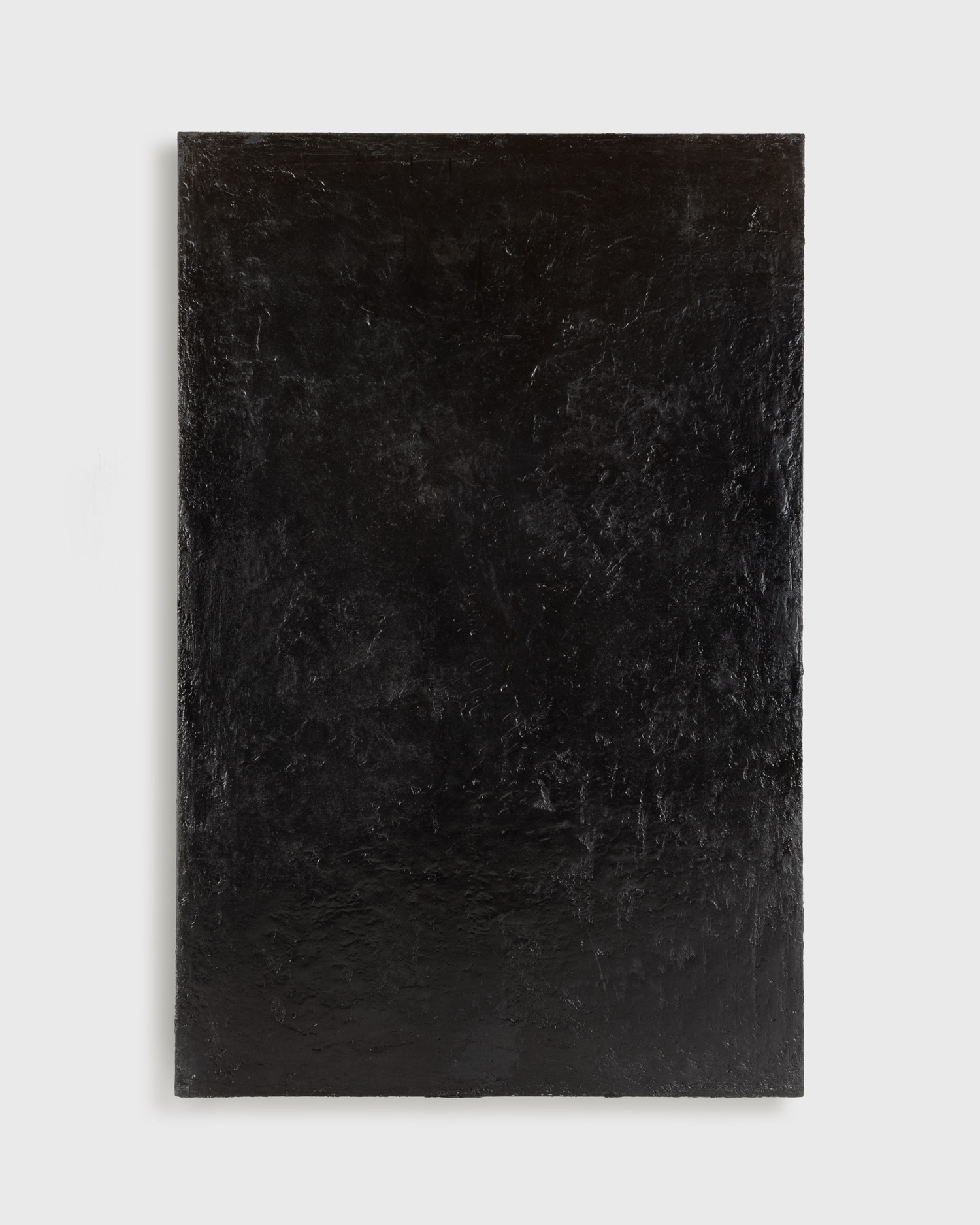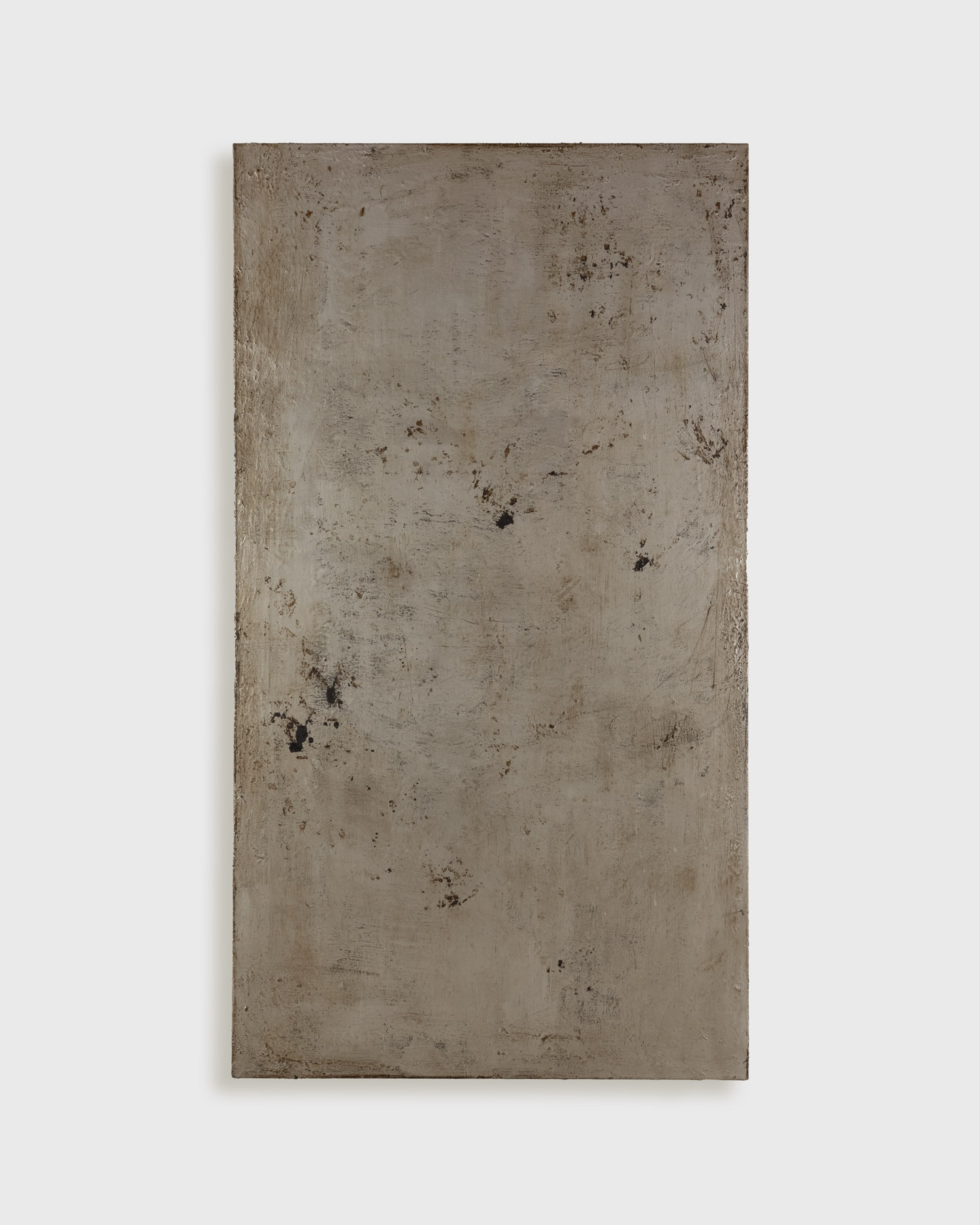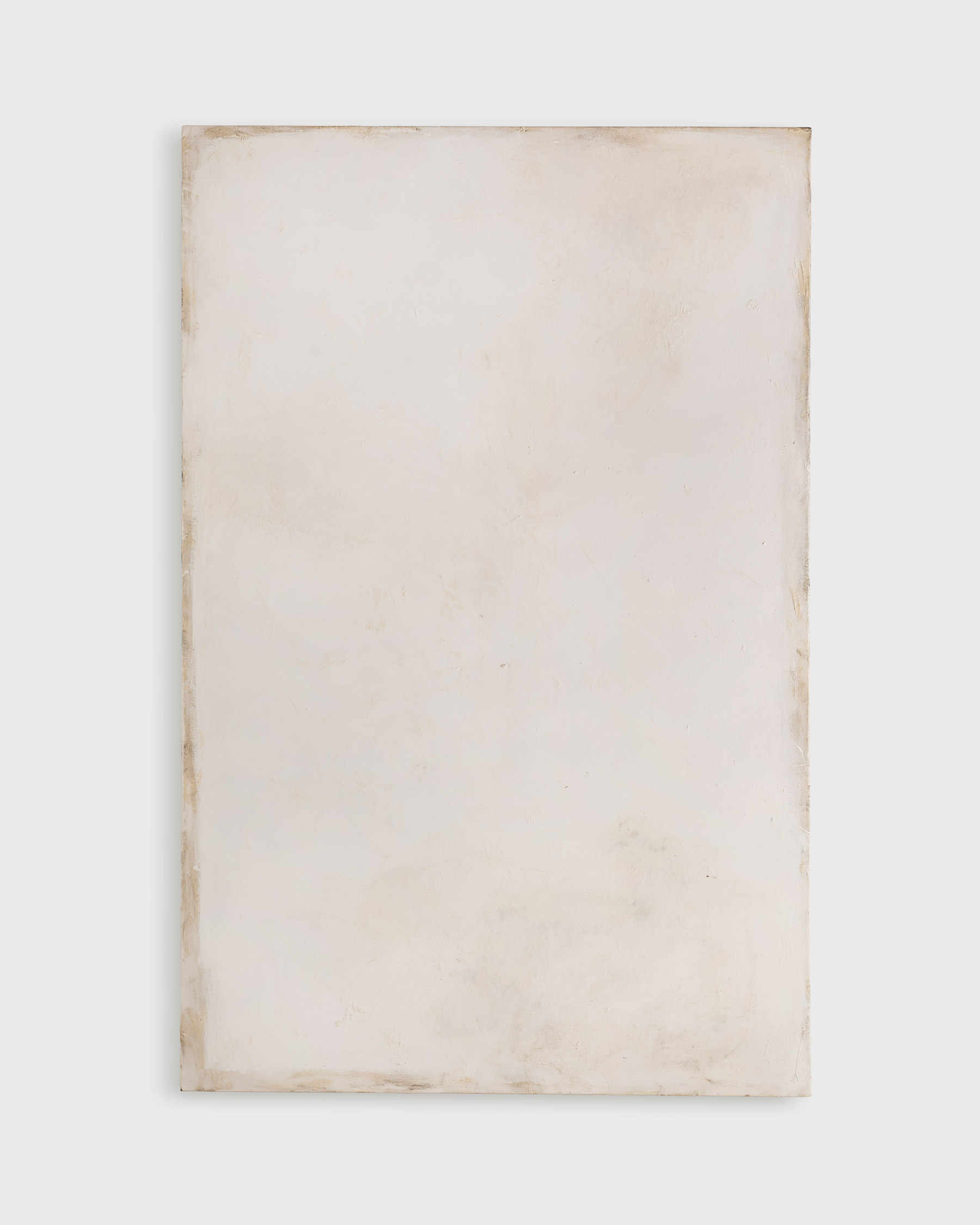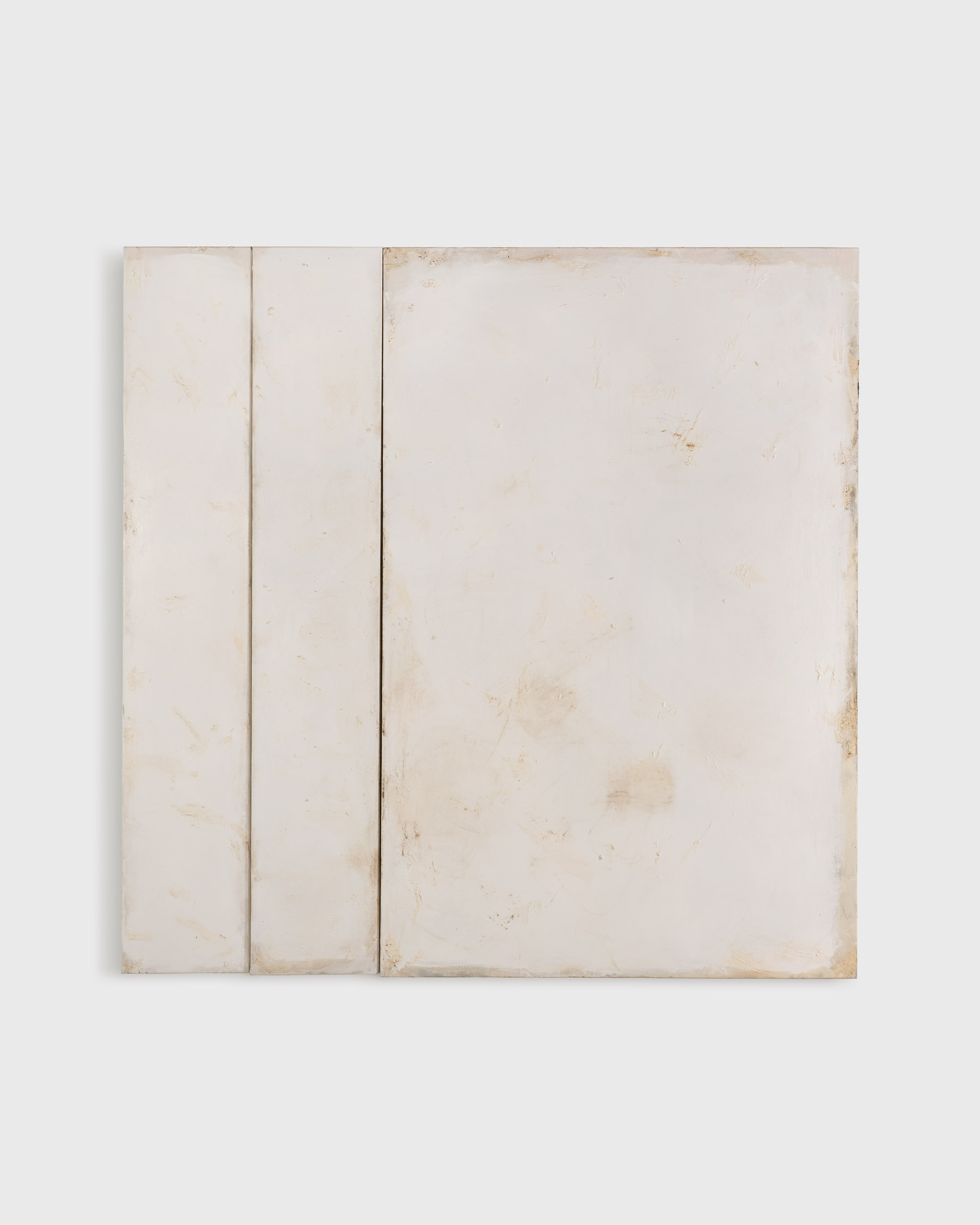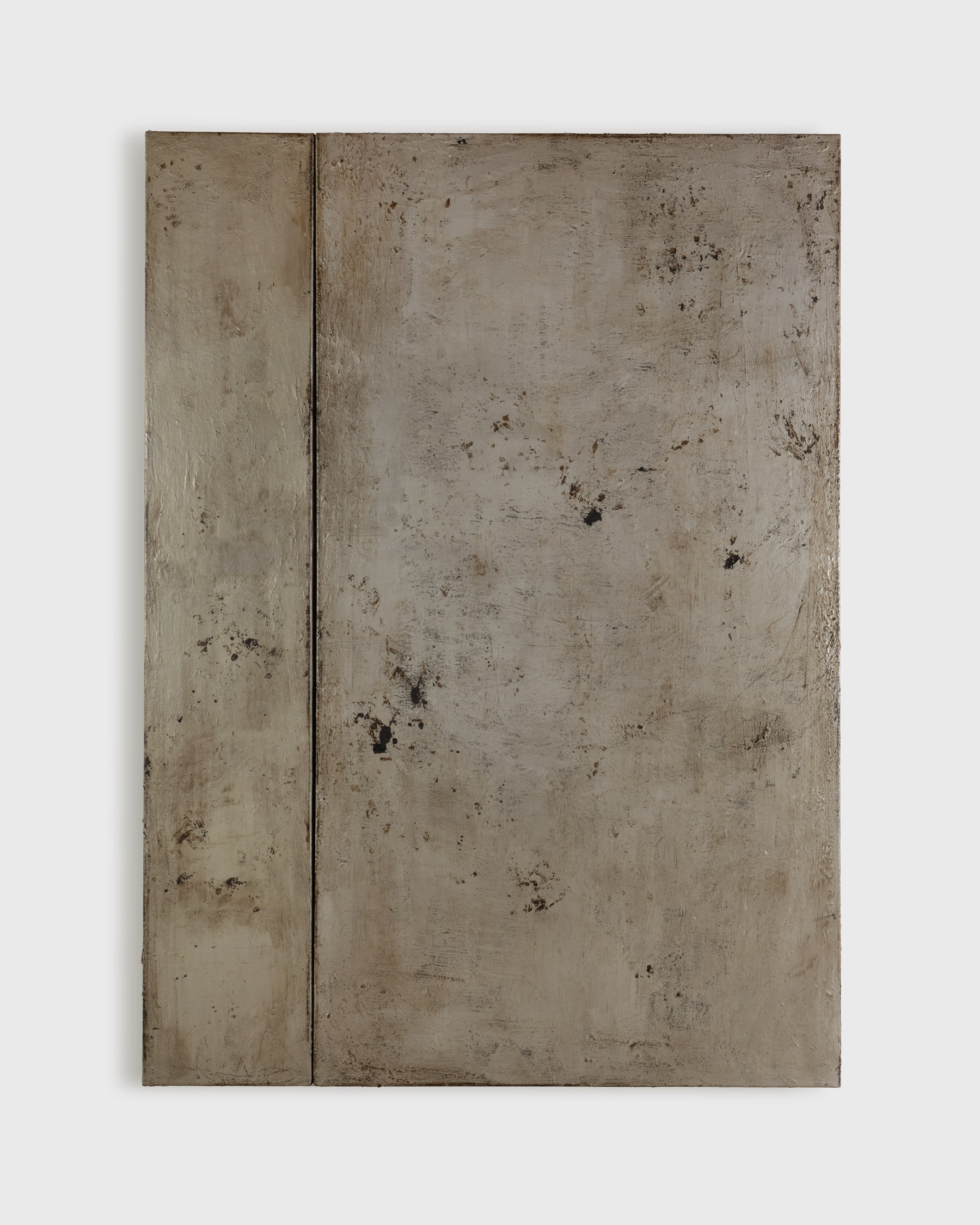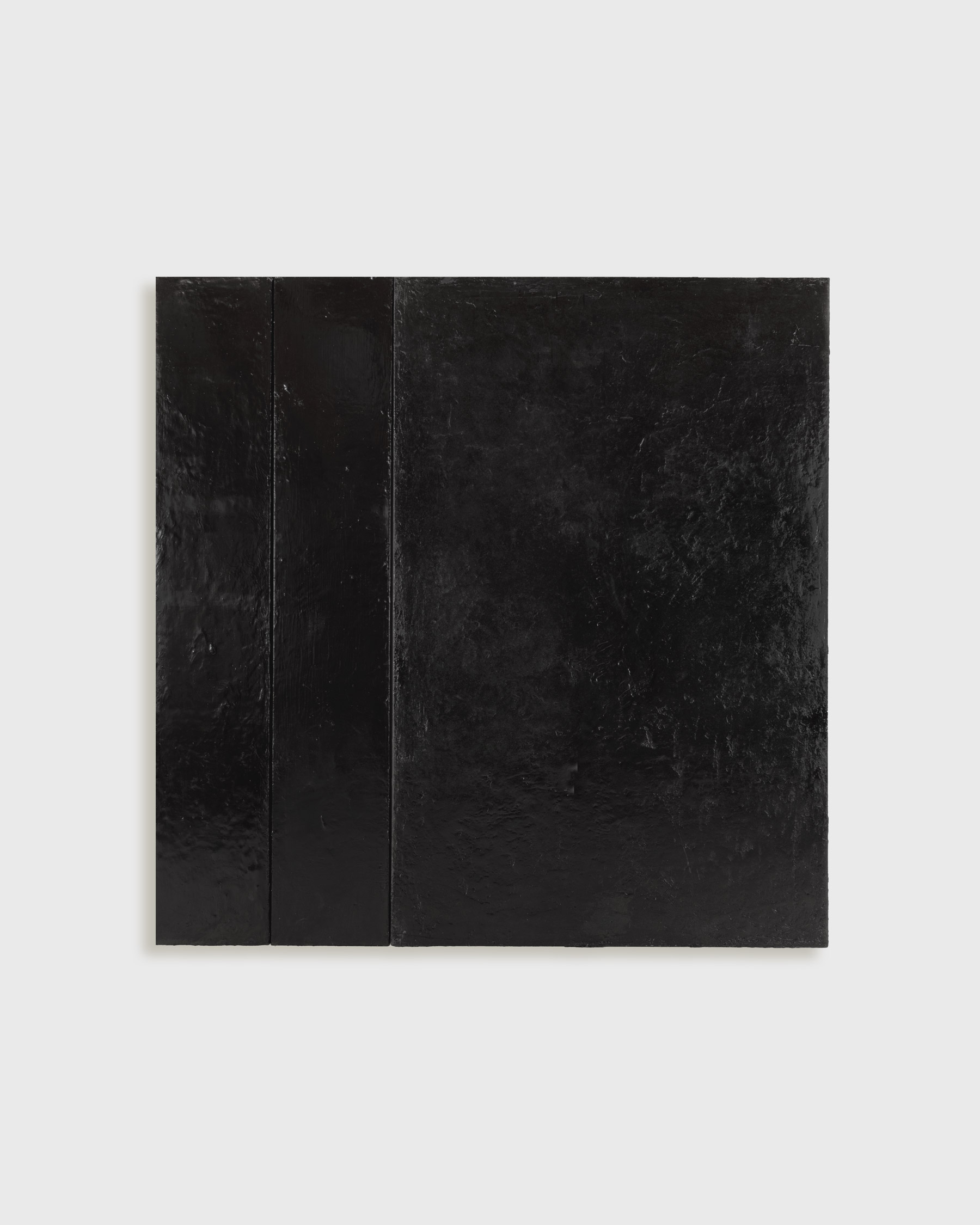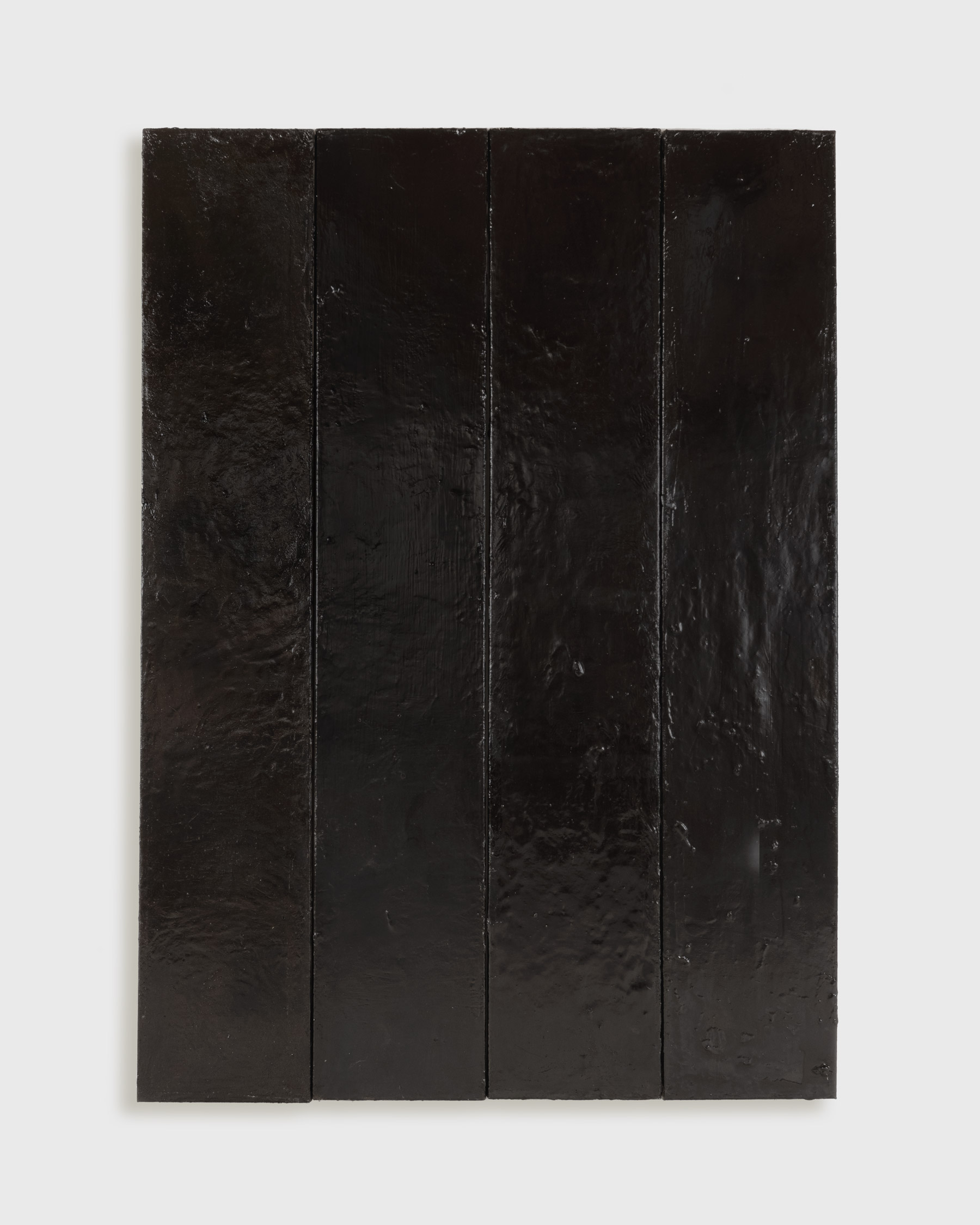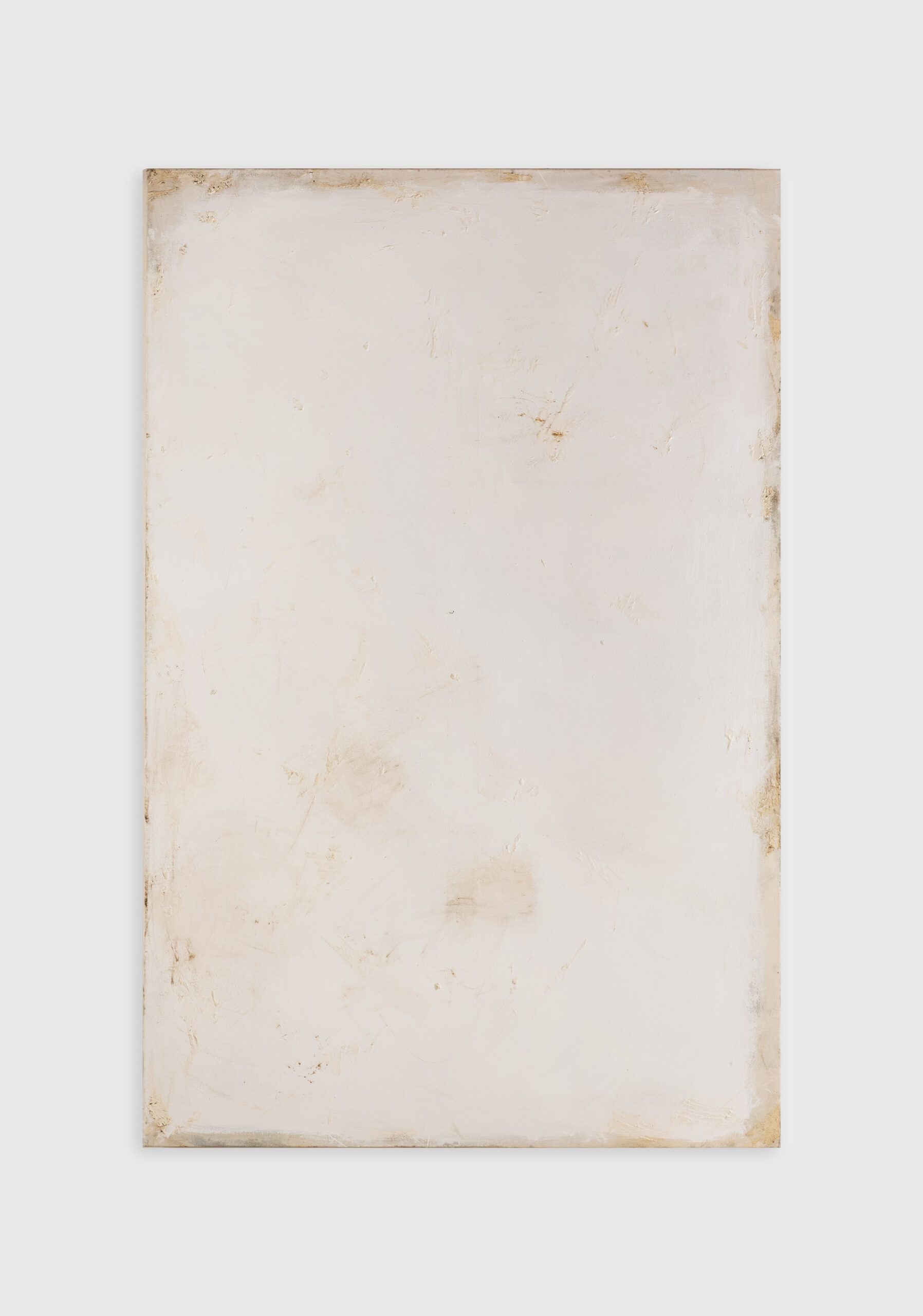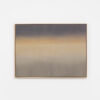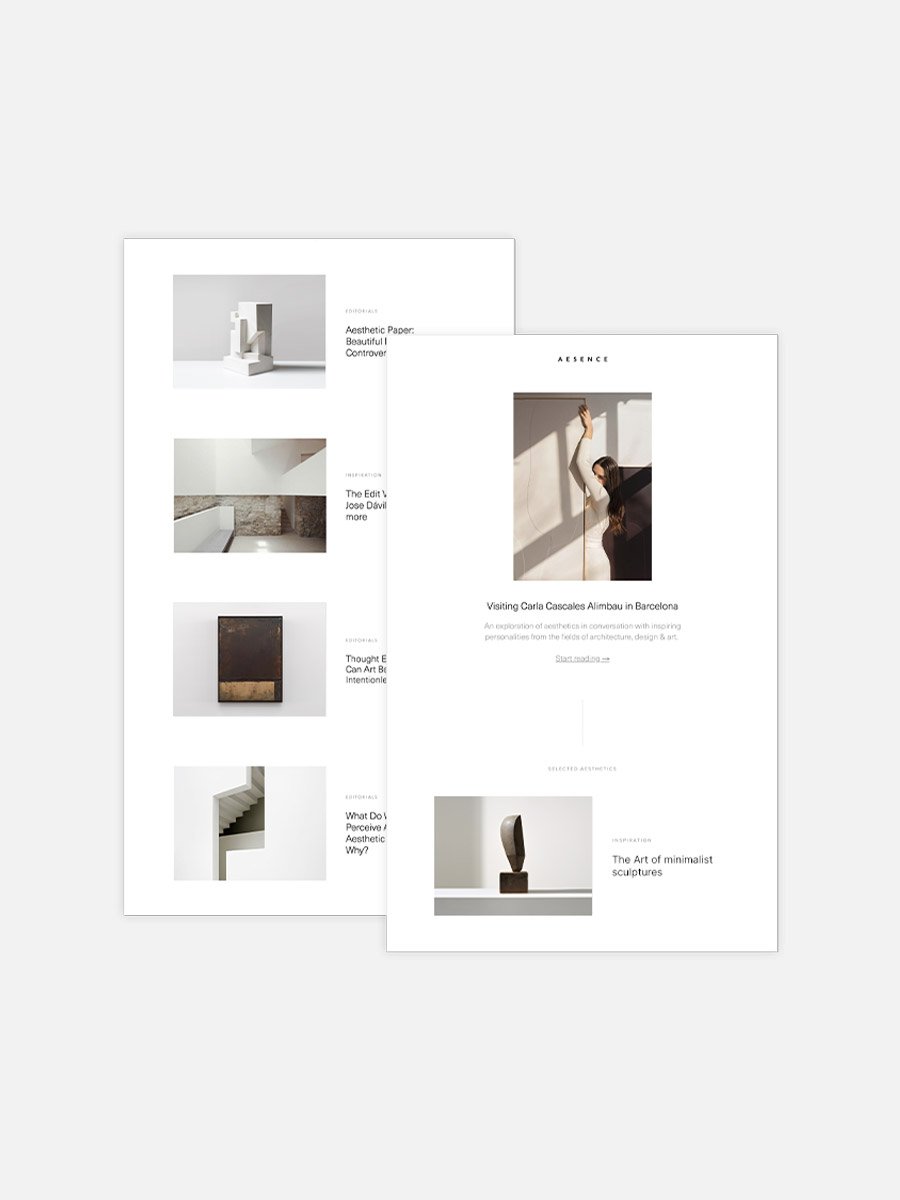In the latest edition of our interview series, we once again dive into the world of minimalist aesthetics. In inspiring conversations with creative minds from the fields of architecture, design, and art, we explore how they are guided by their vision and how they express it in their works. Along the way, they provide us with interesting insights into their creative process and reveal how they perceive and shape the world. This time, I had the pleasure of having an inspiring conversation with Eleanor Bartlett.
British artist Eleanor Bartlett (b. 1951, Wiltshire) explores the complex relationship between form and material. Working with unconventional materials such as tar, wax, and metal paint, the artist transforms these materials into monumental, sculptural paintings. Guided by a deep sensitivity to the physical presence of her works, her practice invites viewers to engage with universal themes such as time and transience.
In this interview, I speak with Eleanor about the beginning of her artistic journey, her fascination with industrial materials, and the disciplined, physical nature of her creative process. She also reflects on the concept of minimalism and how her works aim to communicate on a subconscious level.
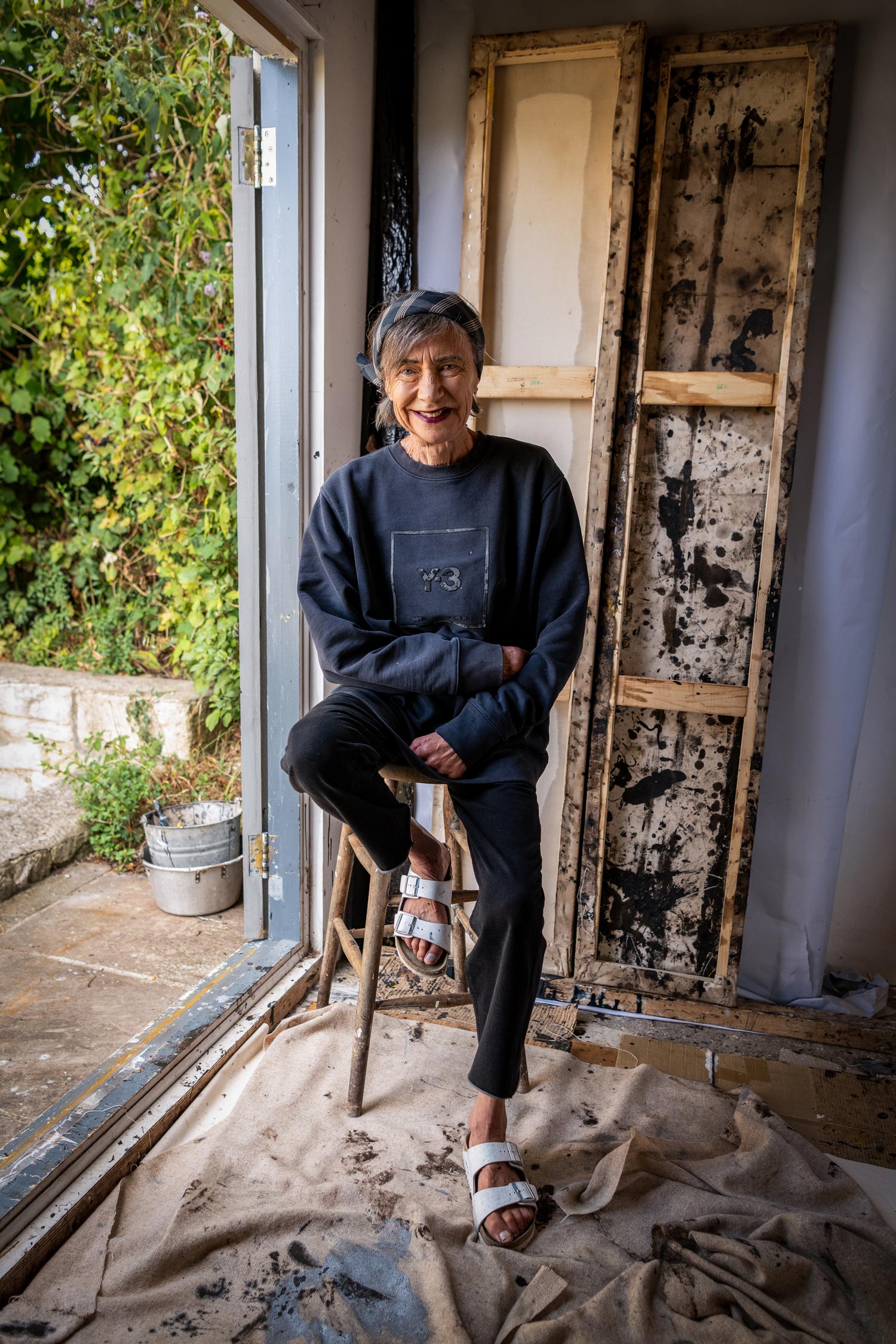
Eleanor, you started your artistic journey in your early 60s. What prompted this significant shift in your life? How has your style evolved since then?
After a career in the health service, I had gathered enough impetus and courage to develop a deeply urgent desire to investigate universal ideas in the only way I considered possible – through painting. As my understanding deepened, I began to perceive the innate structure of form and matter more clearly, and my work gradually evolved to embrace abstraction, expressed as simply and rigorously as possible.
My work tends to favour a paring down and stripping away – saying everything with as little as possible.
Materials like tar, wax, and metal paint now play a central role in your work. What drew you to these unconventional materials, and how did you discover that they perfectly align with your artistic vision?
From the beginning, I have been committed to using materials connected directly to labour and endurance, including those used in everyday situations like road making and roof construction. This attitude stems from a desire to remain unpretentious and in touch with our earthly limitations. The characteristics of these materials – tar, wax, and metal paint – attune with my sensibilities completely, underlying a sense of the eternal within the everyday.
Tell us a bit about your working process with these materials; it appears to be very intense and physical. How does the physical engagement with them influence your creative energy and the final result?
The actual process of application and all the accompanying activities are messy and time-consuming, but this is such a great part of reaching a resolution that I welcome the difficulties involved. The participation of the material plays a major role and ultimately directs the work.
I’ve read that you sometimes rework artworks years after they were first completed. How do you decide when a piece is “finished” or if it should be further developed?
In many ways, a work is never finished. But there is a point when there is a recognizable state of tension, movement, and coherence, which could quite easily tip into destruction at any moment. It is at this point that the painting achieves its greatest power and could be described as finished.
How would you describe your art to someone who has never seen it before?
My work could be described as abstract, with an interest in conveying a sense of the impending void and expanding emptiness. The physical presence is an important factor and depends on the work being viewed as an immediate object.
I think the greatest response to my work is the viewer being unable to articulate in words the feeling the work evokes.
Your works have a monumental, almost spiritual presence. How important is it to you that your works resonate with the audience on a subconscious level? Is there a reaction you hope to evoke in your viewers?
I think the greatest response to my work is the viewer being unable to articulate in words the feeling the work evokes. The work could suggest a familiar but unknown idea, a yearned-for state just out of reach, or an ominous glimpse of another state of being. These responses are difficult, if not impossible, to put into words and belong to a subconscious understanding.
Many artists are hesitant to use the term “minimalist” to describe their work. What about you? Would you describe your works as minimalist?
Minimalism is an aesthetic of exclusion, which celebrates the elimination of unnecessary visual demands. However, it could also imply a poverty and emptiness of energy. My work tends to favour a paring down and stripping away, saying everything with as little as possible. So it really is about how the term is applied.
What are you currently working on, and what are your plans for the future? Are there any new themes or techniques you are excited to explore further?
I continue to work on a series of monochrome paintings with panels and am fascinated by the huge range of possibilities this offers. Advancing with this naturally leads to further discoveries. I am interested in the power of architecture, citing the monumental structures of Louis Kahn and Brutalist buildings as references to the continuing problems of form and matter situated in oblivion.
